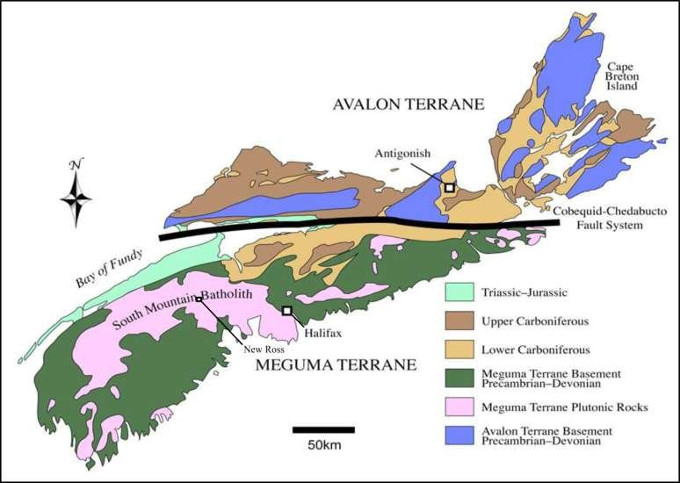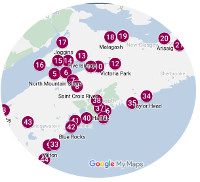- Why Mining Matters
- Jobs
- Safety
- Environment & Operations
- FAQ
- Links
- Fun Stuff
Cobequid-Chedabucto Fault System
of the most geologically-significant and mineral-rich areas of the province is the Cobequid-Chedabucto Fault System, a 300 kilometre fault that divides the southern and northern halves of Nova Scotia. (In geology, a fault is a crack in the Earth’s crust, often the result of tectonic plate movement.)
When all the continents collided about 290 million years ago, they formed the supercontinent Pangea. As part of that process, Nova Scotia was formed by the continental collision of western Europe and northern Africa. The Cobequid-Chedabucto fault is where these two continents crashed together and rubbed against each other for perhaps 150 million years.

The black line marks where the Cobequid-Chedabucto Fault System is located.
The Cobequid-Chedabucto fault is called a “strike-slip fault” because the pieces of continental crust slid along each other instead of over each other. That friction caused earthquakes, tremendous heat that melted rocks and led to the concentration of minerals and metals such as gold, iron, copper, cobalt, barite, zinc, silver, lead and fluorite.




























































































